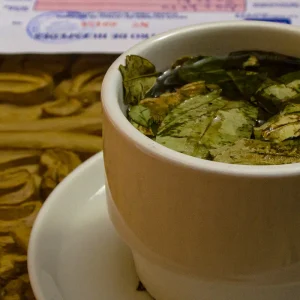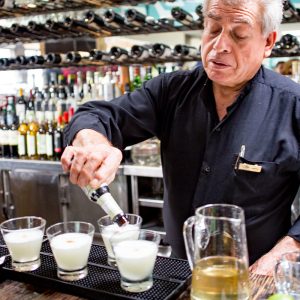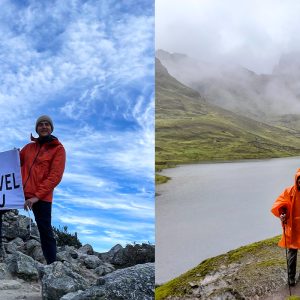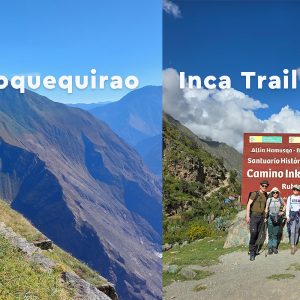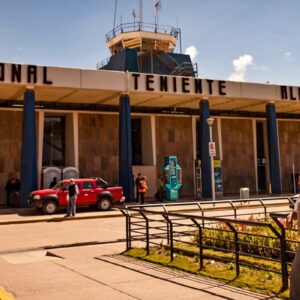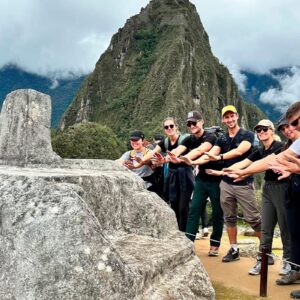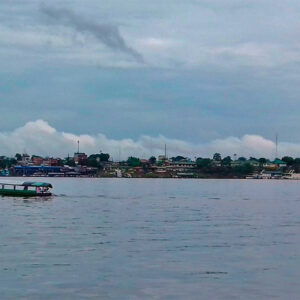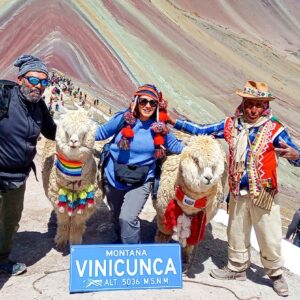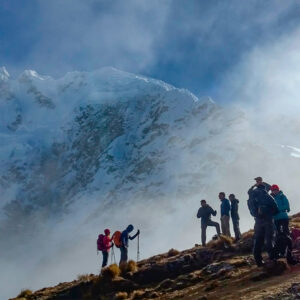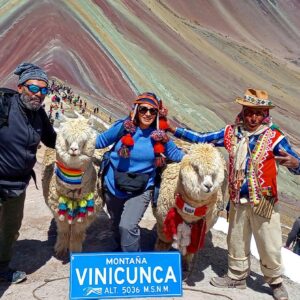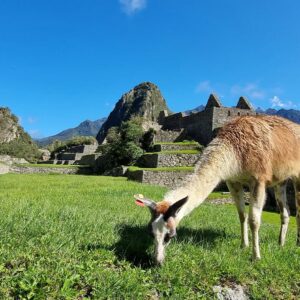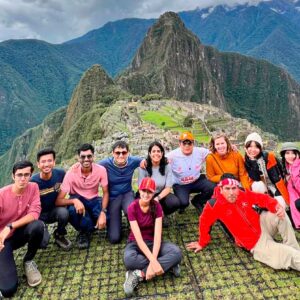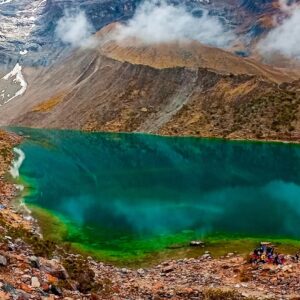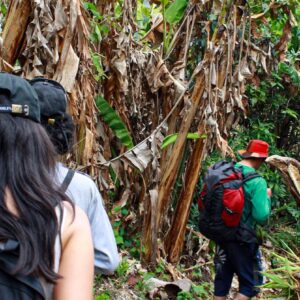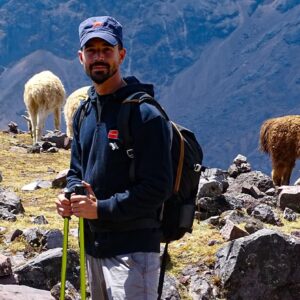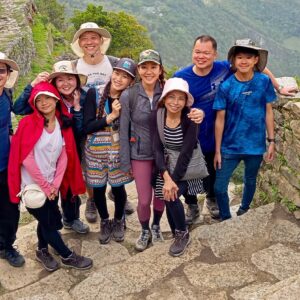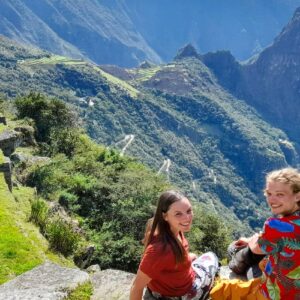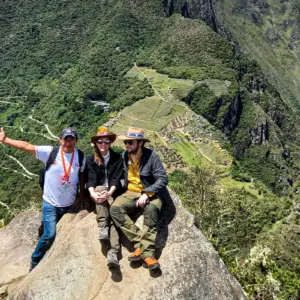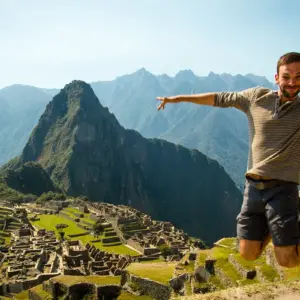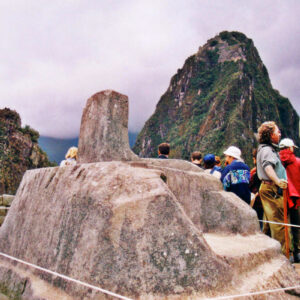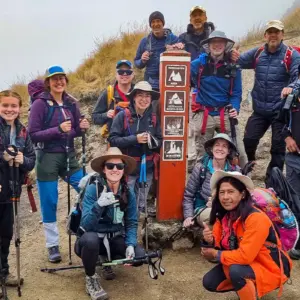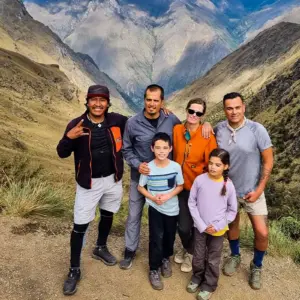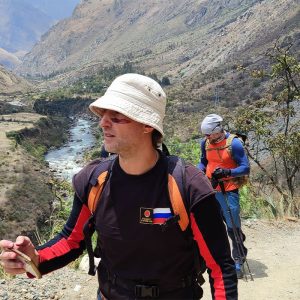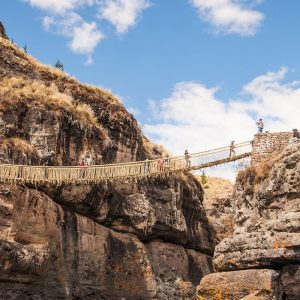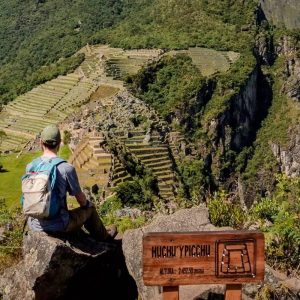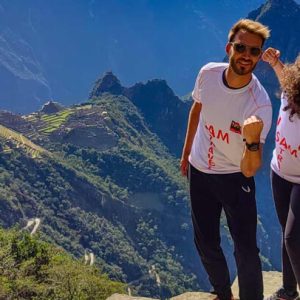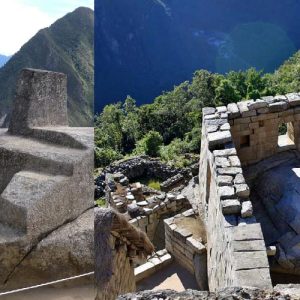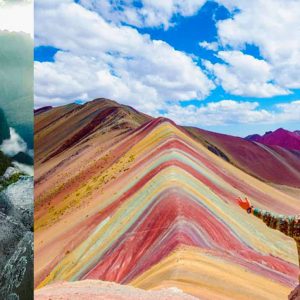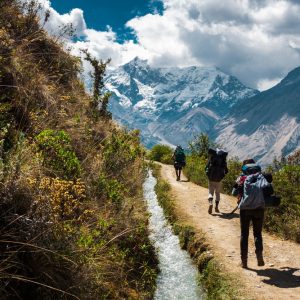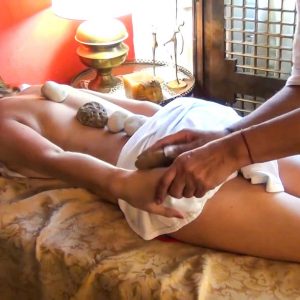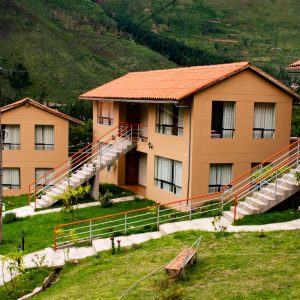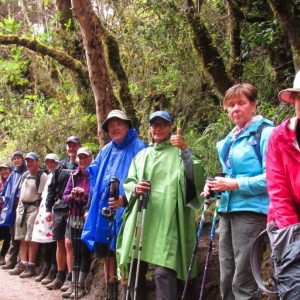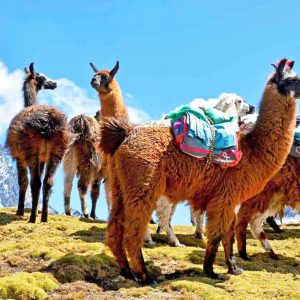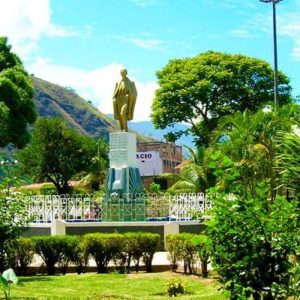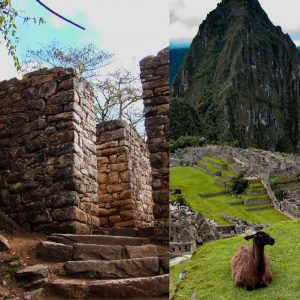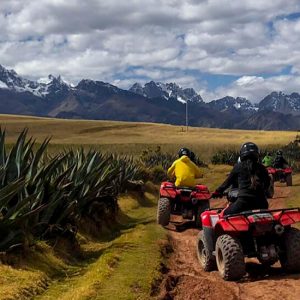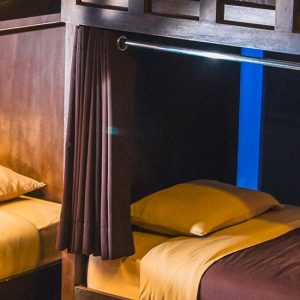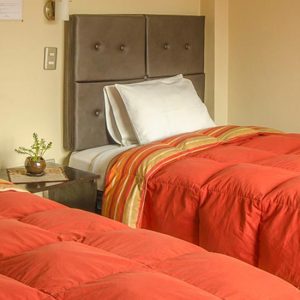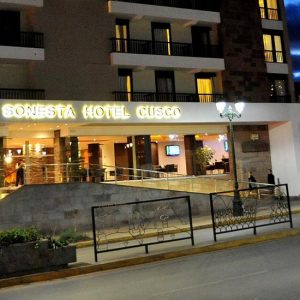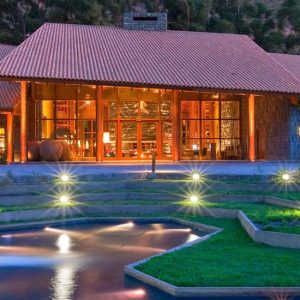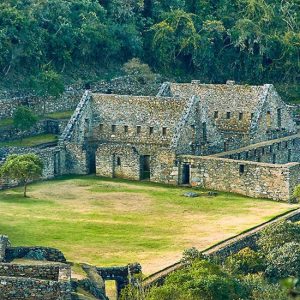Here is the most updated Choquequirao trek information for 2024 – 2025 ! Check it out!
Choquequirao is a recently discovered mystery for researchers of the ancient culture of the Incas. There are still many hidden secrets yet to be found in this massive Citadel. It is an Inca fortress and sister citadel of Machu Picchu. This lesser known citadel is actually three times larger than Machu Picchu with much of it being covered by dense jungle.
Choquequirao is situated between the jungle and the Peruvian Andes, on a mountain 3,033m/9,950ft above the sea level. You can only get there by walking. It’s a 40km/25mls trek both ways, at an altitude between 1,400m/4,593ft to 3,100m/10,170ft above sea level.
- 1 What is Choquequirao
- 2 History of Choquequirao
- 3 Where is Choquequirao?
- 4 How difficult is the trek?
- 5 Choquequiroa Trek vs Inca Trail
- 6 Guided Tour vs Self Trekking
- 7 Altitude Sickness
- 8 How much should I expect to pay
- 9 Packing Checklist for Choquequirao Trek with a Tour
- 10 Typical Itinerary in a Classic Choquequirao Trek?
What is Choquequirao
Choquequirao trek is literally a hidden gem. It’s an archeololgical site thats difficult to reach, perched at the top of the Andes Mountains and surrounded by the encroaching Amazon Jungle. It gives the world one more thing to admire and explore in Inca culture which has a rich archeological history. Choquequirao demonstrates yet another level into the unsurpassed genius of the structural engineering and architectural prowess of the Ancient Incas. The name of this site means ´Cradle of Gold’, which makes sense because it’s built on a mountain top, nestled within the clouds. When one is that high up it is easy to believe you are being cradled by Gold. The majority of the buildings are well-restored and well – preserved. The government is working tirelessly to ensure that the 60% that has not been restored will be preserved soon for all to see.
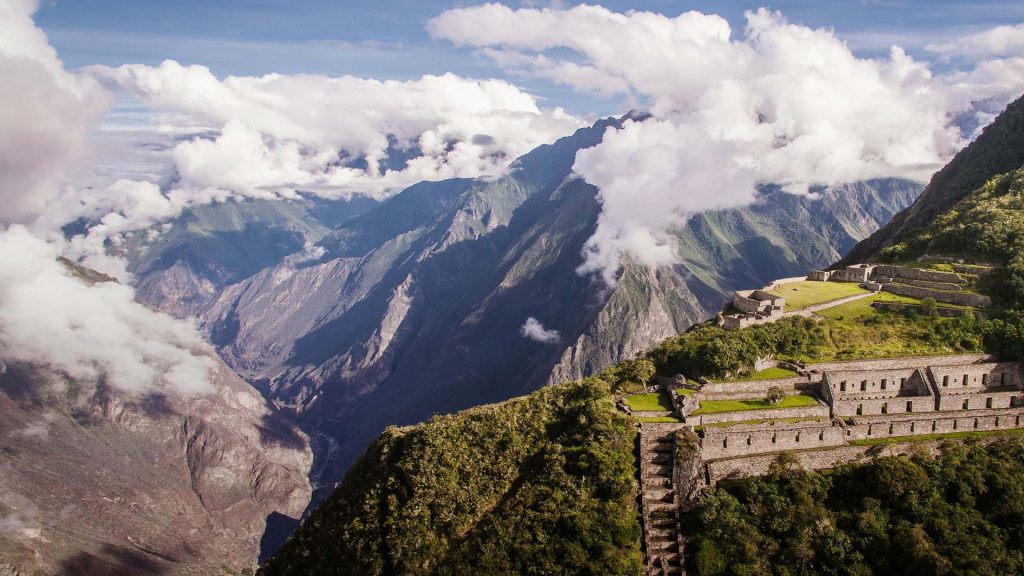
History of Choquequirao
Choquequirao was founded by Pachacuti, remolded by his son Tupac Inca Yupanaui and the most recent settlers belong to Tahuantisuyo people. According to written accounts, it was possibly used as a check point to the Vilcabamba area. The design, structure and placement of the 12 different sectors in the site are very similar to Machu Picchu, suggesting that this could have possibly been constructed around the same time as Machu Picchu in the 15th to 16th century. Because of its strategic location, the city also played an important role as a link between the Amazon Jungle and the city of Cusco.
Incredibly, this site is about three times the size Machu Picchu, even though only 1/3 of the site has been reclaimed. Most importantly, this site is still a great mystery to historians, archeologists and people with a vested interest in this field. There are new discoveries being made every day.
Where is Choquequirao?
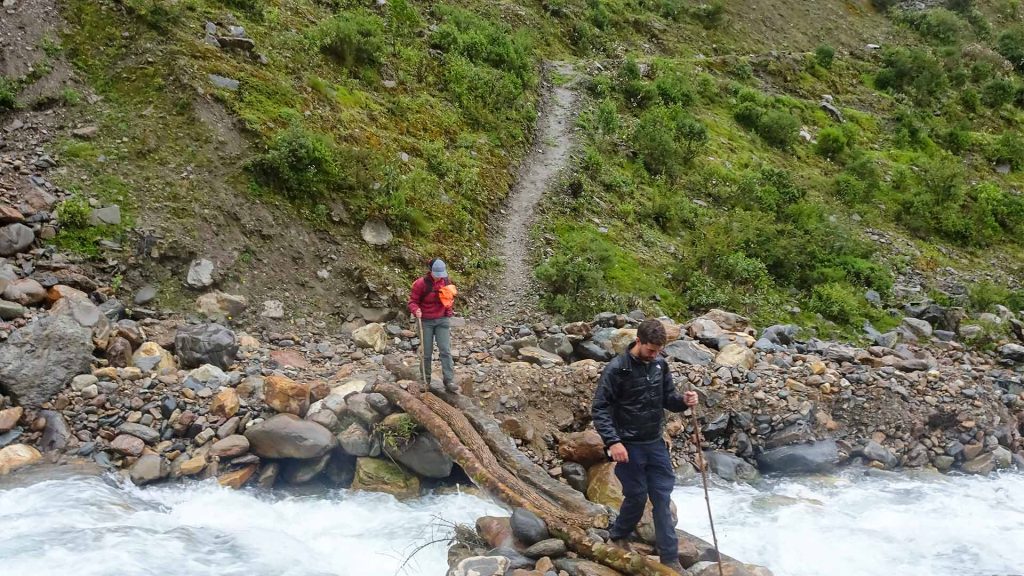
Choquequirao, sits at an elevation of 3,050m/10,010ft above the Apurimac River. It overlooks the Apurimac River Canyon at an elevation of 1,450m/4,760ft. It forms part of Vilcabamba Mountain Range in the Santa Teresa District. The entire complex is more than 1,800 hectares, it’s a massive site. It’s very isolated, a good 98Km/60mls outside of Cusco. Most trailheads for this trek begin at the small village town of San Pedro de Chocora. Trekkers need to make their way from Cusco to Abancay. However, with most Tour Operators, transportation to the trailhead is always included. There is no transportation to get you to the archeological site itself, the only way to get there is by foot. That means only a select few get the pleasure of exploring this site.
There is more than one trail to follow to get here. The classic trail takes 4 days and is the shortest, alternatively, you can take the 5-day trail as well, which is a little longer. Or if you´re an avid hiker and looking for an adventure then the 7 to 8 day trail ending in Machu Picchu is ideal. You pass some amazing sights, crossing passes at over 4,000m/13,123ft in elevation. Choquequirao straddles the top of the Andes Mountains and the Amazon Jungle. Because of its proximity to the jungle you will be graced with amazing Amazonian flora and fauna while trekking, with the most vivid and vibrant natural colors.
How difficult is the trek?
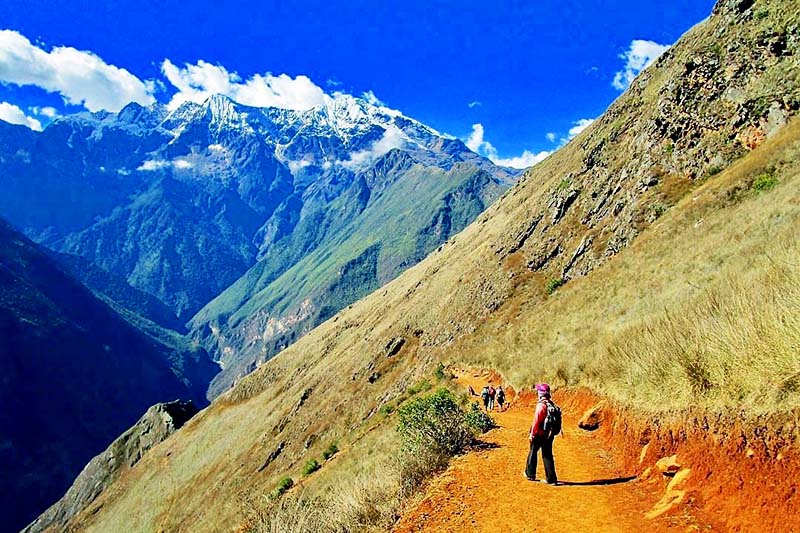
It is very difficult! We recommend this beautiful and challenging trek for experienced trekkers or people in good physical shape who are used to hiking or running frequently.
This site is remote and rarely visited. There are no easy days to look forward to while trekking. In addition, you will descend to lows of 1,400m/4,593ft and then ascend to highs of over 3,100m/10,010ft and back down again. The altitude will not be your biggest challenge, it is not as high as Rainbow Mountain or Cusco City for instance. However, you still get pretty high, so you need to acclimatized, either in Cusco or the Sacred Valley for 2 or 3 days. The trek is very taxing on the legs. With everything said, it is 100% worth it. You will hike in total peace and explore the ruins with almost no tourists around. Compared to the thousands of visitors coming to Machu Picchu every day, Choquequirao only has an average of 25 visitors a day. It truly is an enjoyable experience to join the elite few trekkers who have visited.
Choquequiroa Trek vs Inca Trail
Both the Choquequiroa and Inca Trail treks are so unique and both are a once in a lifetime experience. The starkest difference between the two is the number of visitors and trekkers each one receives on a daily basis. Choquequiroa retains its charm and ruggedness because only around 25 trekkers a day make their way there and most of it still remains undiscovered and unexplored. The site is very remote and difficult to access; often seen as the diamond in the rough and referred to as “The Sister” to Machu Picchu Citadel.
The Inca Trail on the other hand sees hundreds of trekkers every day and is almost always booked months in advance. It has a flat stone path laid down by the Incas with lots of stairs and incredible ancient archeological sites to visit. It too can be a challenge with “Dead Womans’ Pass” and 4 days of hiking, however it is still not at difficult as Choquequiroa. If you are not up to a 4 day Inca trek and still want to experience a part of the Inca Trail, it is possible to join the Inca trail at Km104. You get to trek the last one third of the Classic Inca Trail directly to Machu Picchu through the Sun Gate. Most people are able to do this trek without any problems.
Difficulty of each trek
Another noticeable difference is the difficulty of each trek. The Inca Trail does not need an advanced level of fitness and you can have a day of relaxed and moderate walking. However, the same can’t be said for Choquequiroa, the hike is pretty intense, especially the 7-day version. There are no breaks, except to sleep and get back at it again the next morning.
Flora and fauna
The flora and fauna found on the Inca Trail is pretty unique in its own regard. On the Choquequirao its Amazonian Jungle flora and fauna are wild and unkempt. They have barely been touched by humans. Thus it presents the kind of natural beauty that simply takes your breath away.
Similarities
Once you arrive at these sights, their closely related history is easy to spot. They have divided their complexes into different sectors, depending on each one’s needs and location. The Ceremonial Center shares the most similarities between these two sites. From the main platform you can see lined water channels used to carry ceremonial waters or Chicha (a special purple corn drink still consumed in Peru today) to shrines and baths throughout the site. Included is a main platform reserved for royalty and the elite. Their respect and understanding of astrology is also represented in the Giant staircase that opens up to the December Solstice and other structures that mark the direction of certain solar events, such as the June and December Solstice sun rises and sunsets.
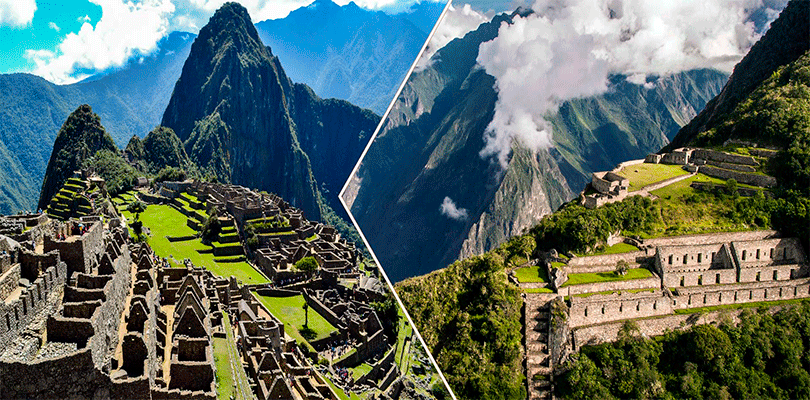
Guided Tour vs Self Trekking
There are a lot of positives to choosing a Professional Tour Operator with a guide that’s experienced in trekking and multi lingual (Spanish, Quechua and English). Firstly, the trailhead is extremely off the beaten trek making finding transport very difficult, whereas a travel agent will include transportation to and from the trailhead.
The shortest trail takes around 4-days. The amount of equipment needed for this undertaking is substantial. Added to that is the fact that the trek is very difficult, thus having to cope with all this extra weight can prove impossible for some. A guided tour with a good Tour Operator will provide mules and horsemen for all your daily essentials, including camping equipment and food. They will prepare your meals with fresh local produce. You can purchase food at selected campsites, but remember a different country means different cuisine. You may not know how to prepare the ingredients offered. The majority of trekking companies work with foreigners and are well equipped to adjusting their cooking style to include both local and international ingredients, satisfying different pallets.
This is one of the most historical sites in Cusco, learning from a guide that has extensive knowledge of the history and is in a position to communicate effectively with the locals from the many indigenous communities you have the pleasure to interact with is a major bonus.
Also, if there is an emergency, the guides of a professional tourist company have satellite phones, oxygen and mules or horses to get the person to medical assistance quickly. All guides are trained in emergency medicine. On your own you are isolated, and since there are very few trekkers, help will be difficult to find. Locals rarely speak english and few even speak spanish; you may need to speak the native language of Quechua to get help. To get help or get back to medical facilities may take longer than is optimal.
It is possible to complete the trek without a guide, but we do NOT recommend it. Language barriers, the food, emergencies, and the isolated location of the trek will present serious obstacles and challenges.
Altitude Sickness
It is a real possibility to experience altitude sickness on this trek if you have not given yourself time to adjust to altitude in Cusco before beginning your trek. A minimum of 2 to 3 days is perfect. While you are adjusting you can tour Cusco or Sacred Valley. Please see below all the different ways to adjust in order to avoid Altitude Sickness.
Tips To Avoid Altitude Sickness In Cusco
- Relax and take it easy! Take a few days at the start of your trip to acclimatize to the altitude before attempting any treks or strenuous activity. This is the easiest advice we can share, take it easy for the first few days and your body will thank you later.
- Get lots of sleep. Sleep is the best remeday of all! Do not be afraid to just sleep it off as your body adjusts.
- Avoid alcohol & drugs. This includes sleeping tablets and tranquilizers as these can all make the symptoms worse.
- Drink lots of water. Staying hydrated prior to and throughout your trip is crucial to avoiding unpleasant altitude sickness symptoms.
- Drink coca tea. Nearly every hotel in Cusco and the Sacred Valley offers fresh coca tea to guests and for a good reason too! Coca tea is completely safe to drink and a cup or two each day can ease altitude symptoms.
- Go lower and acclimatize. Head straight to the lower altitude of the Sacred Valley or Machu Picchu.
- Get an Oxishot! Oxishot is a small dischargeable can that contains 8 litres of oxygen that you can take when you arrive in Cusco and anytime you need a boost. It can help reduce headaches and fatigue associated with altitude sickness.
- Visit your doctor. If you are still worried before you to travel, head to your doctor and ask for an acetazolamide prescription (also known as brand name Diamox) which can be taken to help avoid altitude sickness symptoms
Altitude sickness information provided by SAM TRAVEL PERU.
How much should I expect to pay
The easy and safest way is to take a tour, which costs around $450 to $977 USD with everything included (always check what is included). Price is based on the number of days you choose to trek from 4, 5, 7 or 8 days. When choosing a tour operator for this trek, be sure that the agency is the company that is actually providing the trek and that they guarantee departure if a minimum of 2 or more people book because some companies will cancel if they do not get enough people. Their price may be lower because they need a higher minimum number of people to trek. Since this trek is challenging thus fewer people trek it; it is very possible they may not get enough trekkers and cancel at the last moment. Be sure to book with an agency that actually provides the trek and guarantees the trek if 2 or more people book it.
Packing Checklist for Choquequirao Trek with a Tour
What you have to take with you?
- Original passport (it has to be the same you have used for booking your trek)
- Good daypack (the smaller, the better)
- Water storage: 2-3L reusable water bottles (Camelbaks are encouraged)
- Comfortable hiking boots with ankle support
- Sleeping bag (can be rented from several different agencies in Cusco)
- Headlamp: essential
What to put in your duffle bag for the Choquequirao trek?
Most tour companies will provide you with a duffel bag at your briefing and include horses who will carry up to 7 kgs or 14 lbs including your 2.5kg sleeping bag, mattress and extra clothing. By Peruvian law, a duffel bag must not weigh more than 7 kilograms (15lbs). This limit is set to protect the health of the porters or horses. All bags will be weighed before being accepted. If you require more than 7 kilograms, it will then be your responsibility to carry the extra weight with your day pack. In this 7 kilos, please count 2 kilos for your sleeping bag and 1 kilo for your sleeping pad. This leaves you about 4 kilos for your personal gear. It is important to note you will not have acces to this bag during the day as the pack horses/porters will always be ahead of the group. You will find your duffel bag in your tent upon arriving to camp.
- 2 t-shirts
- 2 hiking pants at least
- 4 sets of undergarments
- 3 sets of hiking socks
- Bathing Suit for the thermal waters
- Couple Fleece/ Thermals
- Warm clothes, down jacket — 2nd campsite temp around 3º C
- Waterproof gloves (even if they are ski gloves, take them)
- Comfortable shoes for camp
- Quickdry towel. We provide small ones, you might prefer something larger
- Small bottle of soap: we provide warm water each day to wash
- Battery Charger: No electricity along the trek
- Large plastic bags
- Sleeping bag: It has to be at least -15ºC
- Swimming Suit
Toiletries
- Face moisturizer
- Hand Sanitizer
- Wet wipes
- Toothbrush and toothpaste
- Personal medications
- First aid kit: band aids, moleskin, etc
What to put in your backpack for Choquequirao trek
We highly recommend a small backpack 30 to 40 Litres for hiking in the day. With the difficulty of this trek, you do not want to carry a large heavy day pack. The remainder of your belongings will be in your duffel bag at camp. The horses will carry that.
- Water: Please supply your own water until the first lunch spot, then the company should provide you with cold boiled water at each meal time.
- Sun hat
- Sunscreen
- Headlamp: essential
- Wool hat
- Rain gear
- Fleece
- Snacks like chocolate bars, cereal bars or any dry fruits
- Rain plastic poncho
- Gloves
- Camera
- Hand sanitizer
- Toilet paper and small plastic bag for waste
- Extra money for souvenirs, drinks & tips


